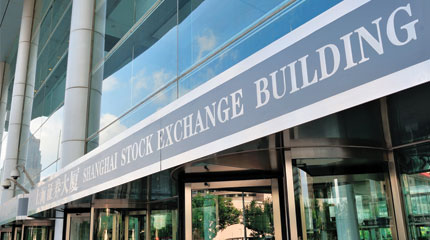 HuaAn Funds began to explore gold-related products after the global financial crisis in 2008. As equity and bond markets fell and questions were raised about the sustainability of some of the world’s largest financial institutions, the attractions of gold came to the fore.
HuaAn Funds began to explore gold-related products after the global financial crisis in 2008. As equity and bond markets fell and questions were raised about the sustainability of some of the world’s largest financial institutions, the attractions of gold came to the fore.
At that time, we conducted a thorough assessment of gold’s investment characteristics, its risk reduction potential and the most appropriate asset allocation within a diversified portfolio.
Backed by the Shanghai Stock Exchange and Shanghai Gold Exchange, we then spent several years exploring how best to launch gold ETFs in China. We were well placed to conduct this study, having introduced a number of innovative products to the Chinese market, including the first open-ended fund, the first monetary fund and the first open index fund.
Gold ETFs finally gained approval in 2013, and were the first cross-regulator, cross-market and cross-system listed financial products in China. As a pioneer in this sector, HuaAn’s gold ETF was one of the first to be listed and traded on the Shanghai Stock Exchange.
Given that this was a major new product, success was far from guaranteed, not just in terms of investor response but also in terms of market effectiveness. So ahead of the launch, we and others in the market worked closely with regulators and other stakeholders to ensure that trading, subscription and redemption all functioned efficiently from the very start.
Gold ETFs enjoy several benefits compared with other gold investments. The participation threshold is lower, holding costs are lower, trading is straightforward and investors do not need to focus on asset storage or security.
While the launch was a success, take-up was initially sluggish. Gold ETFs came to the market in July 2013 and investor response was muted between then and the end of the following year. In 2015 however, gold ETFs began to gain momentum. Our spot gold ETFs increased by 250 million lots that year, along with those of fellow funds provider Bosera.
Then, in 2016, the gold price rose sharply and all gold ETFs witnessed a dramatic scaling-up. The HuaAn gold ETF, in particular, registered explosive growth, with a net subscription of more than two billion lots that year. As a result, it became the largest in Asia and remains so to this day.
China’s gold ETF market is still in its infancy. Nonetheless, important steps have been made.
The market’s development can be attributed to several factors. First, the investor base has increased significantly. As a listed asset, a wide range of investors can access gold ETFs and awareness has risen steadily over the past four years. Breadth of access is further increased because the gold ETF is structured as an open-ended fund, enabling greater participation from institutional investors.
Second, gold ETFs enjoy several benefits compared with other gold investments. The participation threshold is lower, holding costs are lower, trading is straightforward and investors do not need to focus on asset storage or security.
Third, China’s gold ETFs can be leased out, generating premiums, which may cover administrative and custodian fees. According to Chinese fund management rules, all leasing premiums have to be booked within fund assets and leasing is subject to stringent risk management. However, it does reduce the cost of investment, thereby enhancing the appeal of gold ETFs.
Today China’s gold ETF market is still in its infancy. The largest in Asia, it remains small compared with those elsewhere in the world. Nonetheless, important steps have been made and we at HuaAn are proud of our contribution to this burgeoning sector. Not only did we play a decisive role in the launch of the market, we are also strong advocates for gold ETFs and have been from their inception.
Having set up a dedicated precious metals research centre, we are actively engaged in investment, trading, research and marketing. To that end, we published a report entitled Time for Gold to Glitter at the end of 2015 and another, Investment Opportunities of Gold in a Strong Dollar Regime in early 2016. We provide investor training for institutional clients and retail institutions and we engage regularly in promotional activity, recognising that this is key if we are to raise investor awareness of gold ETFs.
